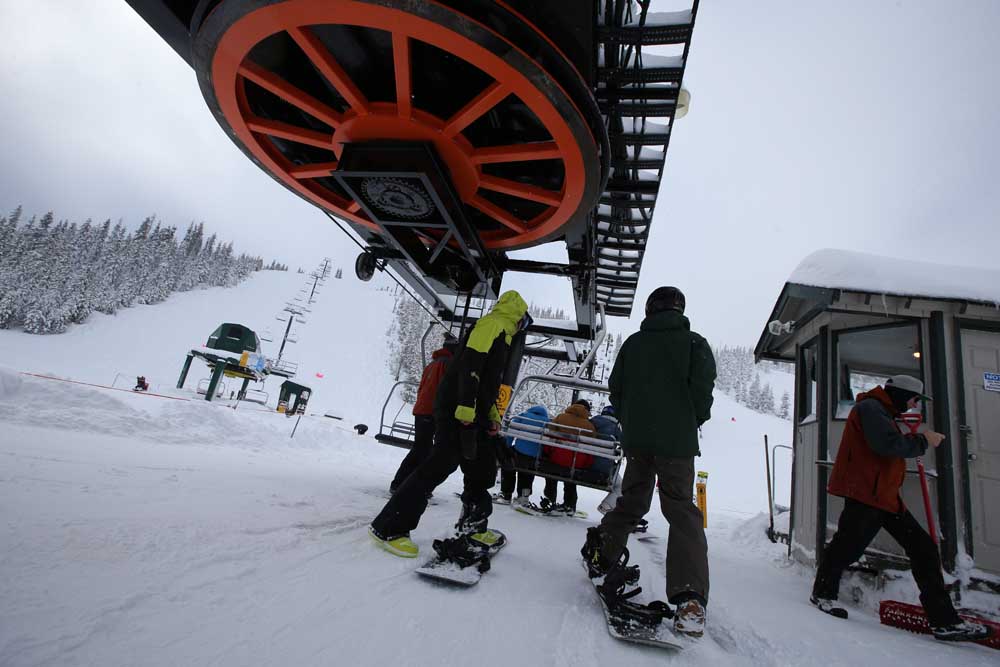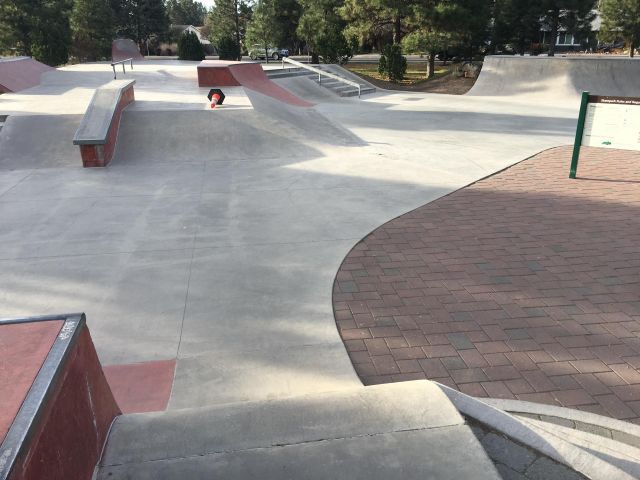La Niña could make for happy skiers and snowboarders
Published 3:00 pm Friday, October 25, 2024

- Two snowboarders get ready to ride the Manzanita chairlift during opening day last Jan. 10 at Hoodoo Ski Area.
Last year, ski and snowboard season started much later than normal in Central Oregon.
Mt. Bachelor ski area opened Dec. 2, then closed for five days before reopening, and Hoodoo Ski Area did not open until Jan. 10.
Trending
This season is likely to start much earlier, as a La Niña weather pattern is forecast to bring a colder- and snowier-than-average winter to the Pacific Northwest.
“A couple weeks ago, there wasn’t very much indication that a La Niña was forming in the tropical Pacific, but now we’re starting to see the unmistakable signs of it,” said Larry O’Neill, the state climatologist and the director of the Oregon Climate Service at Oregon State University in Corvallis. “So that just means that there’s colder water in the equator and a weakening of winds along the equator. Those are two very good signs that a La Niña is forming. There’s little bit better than 70% chance that a weak La Niña will form in a month or two.”
O’Neill added that the forecast “weak” La Niña means the temperature response will be strong but the precipitation could be a bit more unpredictable.
“But the temperature is key, because it means whatever snow falls in the mountains tends to stay there,” O’Neill said. “The snowpack builds faster throughout the year.”
Mt. Bachelor scheduled for Nov. 29 opening
Mt. Bachelor is tentatively scheduled to open on Nov. 29, conditions permitting, and Hoodoo typically tries to open by early to mid-December.
Trending
While a La Niña makes for a colder and snowier winter in the Northwest, the opposite is true in the Southwest and California, which can be warmer and drier. The dividing line is usually somewhere in Central to Southern Oregon, according to O’Neill, so sometimes Washington can have a stronger response to a La Niña than Oregon.
Last winter featured a strong El Niño, which made for a drier and warmer winter, and a late start to the ski season. Still, Oregon ended up with an above-average snowpack, according to O’Neill.
“We had a really late start … second week of January,” O’Neill said. “But we had a couple really good storms and it stayed cool through February and the snowpack built up quickly.”
Mt. Bachelor averages about 400 inches of snowfall per year and 75 snowfall days, according to onthesnow.com. Last winter, it received 384 inches of snow with a maximum base depth of 129 inches recorded on March 5, according to mtbachelor.com.
Skiers and snowboarders are hoping for more this year, and with the predicted La Niña, the chances are good.
Before the 2023-24 winter, Oregon had three consecutive La Niñas, from 2020 to 2023.
“It was one weak La Niña and two moderate La Niñas,” O’Neill said. “One was average, one above average and one below average. So it’s just a warning that there’s no perfect forecast for the snowpack. We can get some variability. Some of that may be due to climate change.
“Steadily over time the snow line has been increasing and the snowpack has been more variable between lean and robust years. The snowpack has been steadily declining. What would be considered a really good snow year now, 50 years ago might have been an average one.”
Changes at Mt. Bachelor
Sunrise Lodge, Mt. Bachelor’s hub for beginner terrain, is undergoing an expansion that will add more than 50 seats, according to mtbachelor.com.
Restrooms will be added to Mt. Bachelor’s outlier lifts: Outback Express and Northwest Express on the west side of the mountain, and Cloudchaser Express on the east side.
Northwest Express lift had a new electric motor installed in the spring, bringing the lift back to full operating capacity, according to mtbachelor.com. The generator on Skyliner Express lift was installed, which will allow the lift to run at full capacity and speed if the resort loses power.








